Abstract
After reaction of DNA with high concentrations of bleomycin, approximately 80% of the DNA becomes trichloroacetic acid (TCA) soluble. The remaining 20% of the DNA remains TCA insoluble. Upon further treatment of this TCA-insoluble material with high concentrations of the drug, no further drug action can be detected. Drug action is defined as fragmentation of DNA to smaller molecular size, release of free bases, and TCA solubilization. This material which is not attacked by bleomycin has been termed bleomycin-resistant DNA. This bleomycin-resistant DNA does not compete with native DNA in the bleomycin reaction indicating that there is no binding or inactivation of the drug by the resistant DNA. The resistant DNA shows very little hyperchromicity when heated through the melting temperature for the corresponding native DNA, indicating a single-stranded structure. Results of sedimentation and equilibrium analyses yield a molecular weight of about 4,000 daltons. This value is the same regardless of the source of the native DNA. Finally, the bleomycin-resistant DNA exhibits a base composition similar to that of the native DNA from which it was derived.
Full text
PDF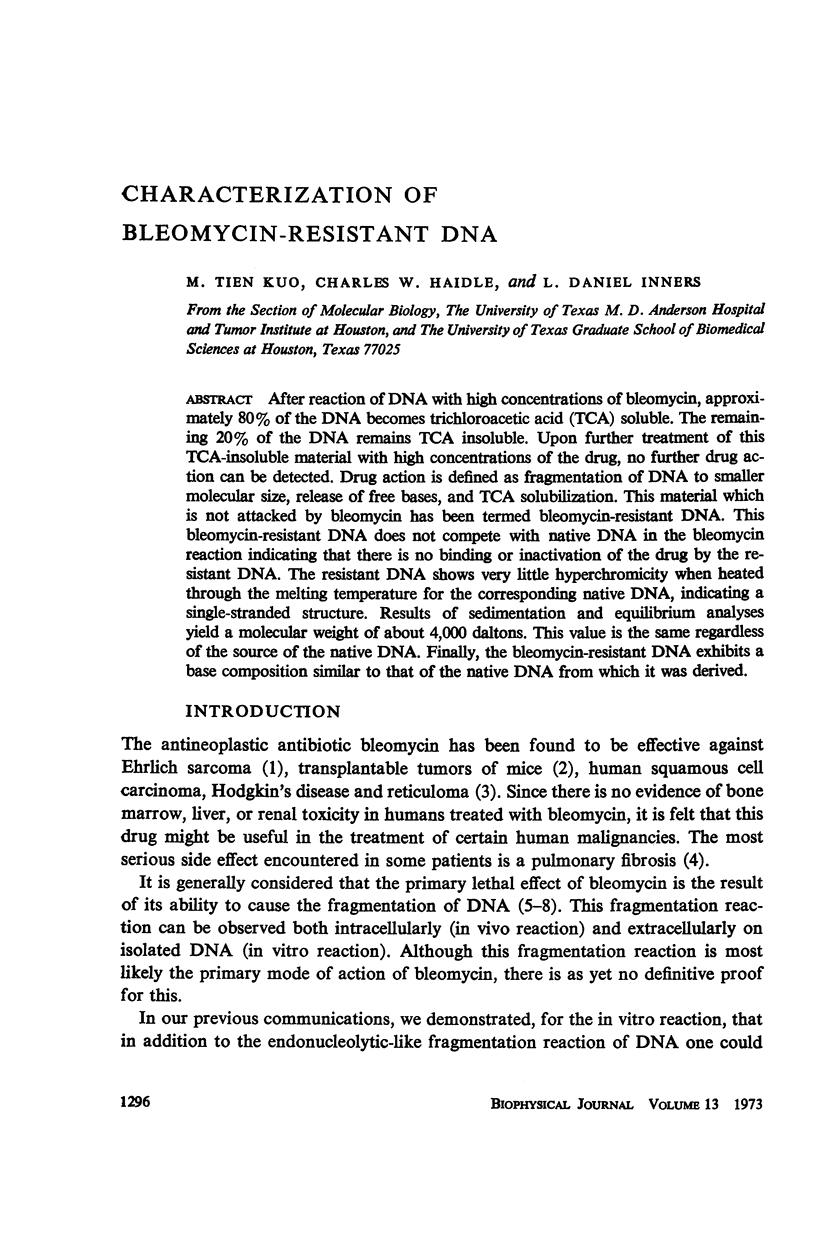
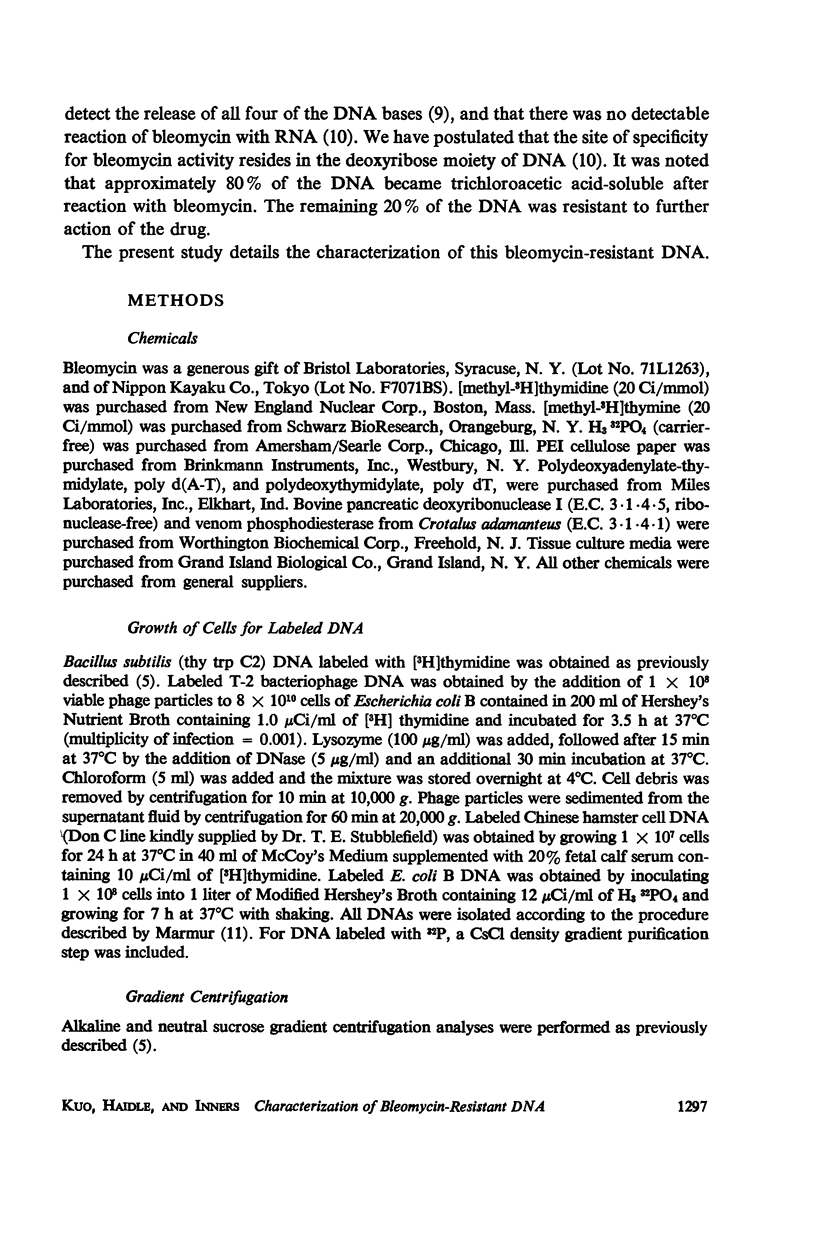
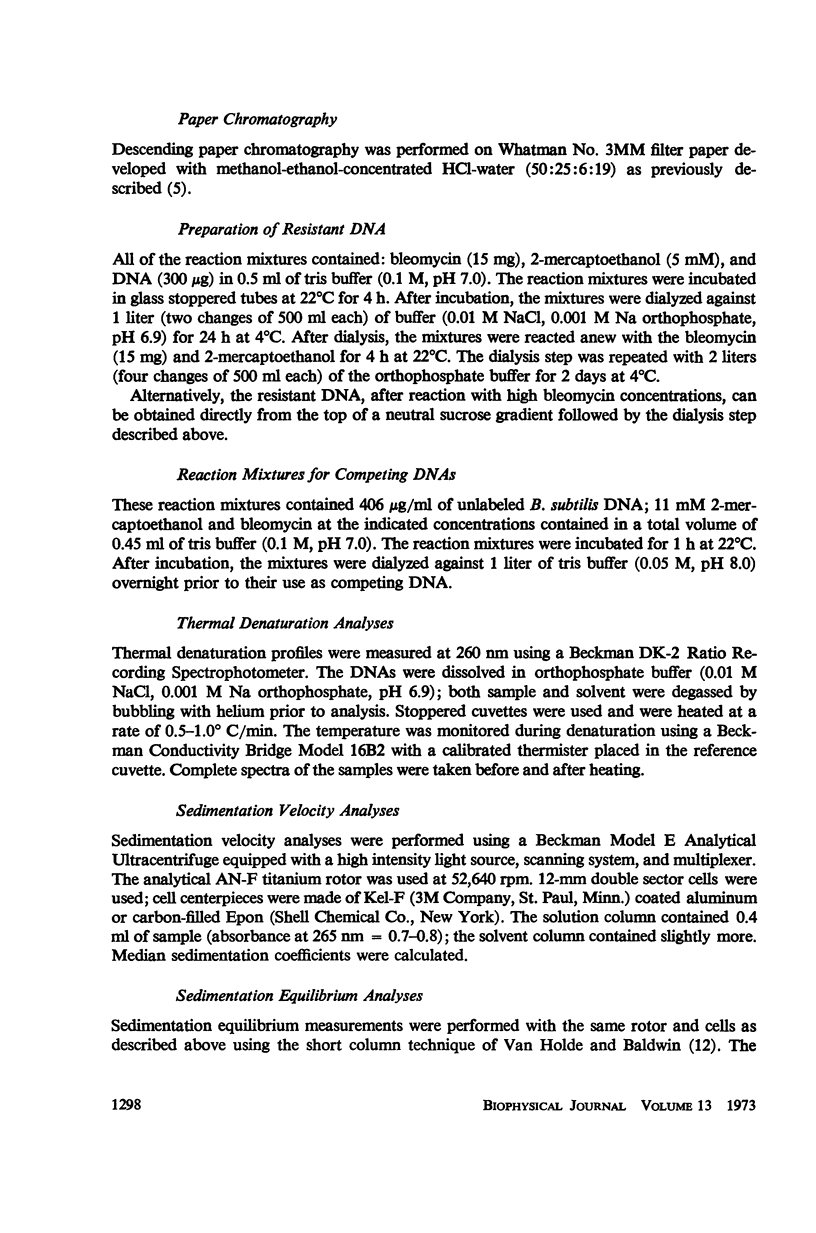
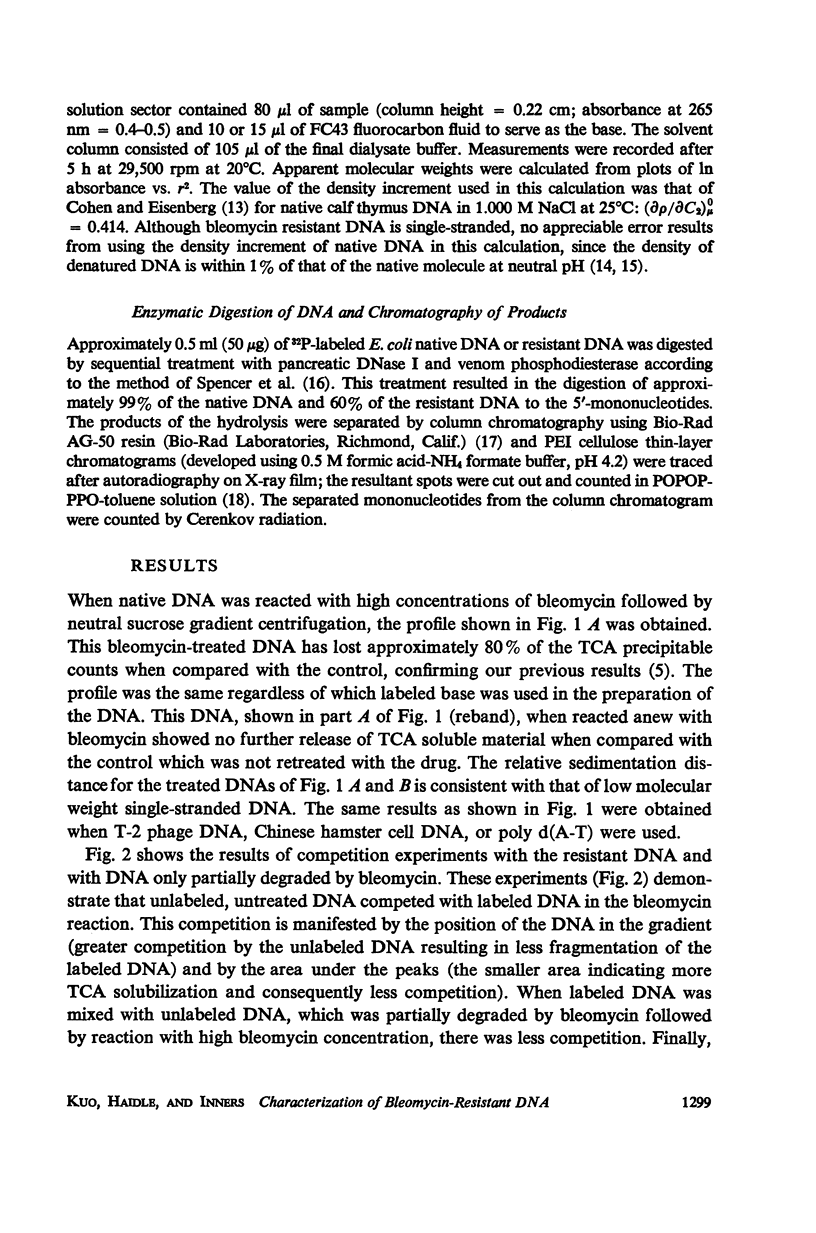
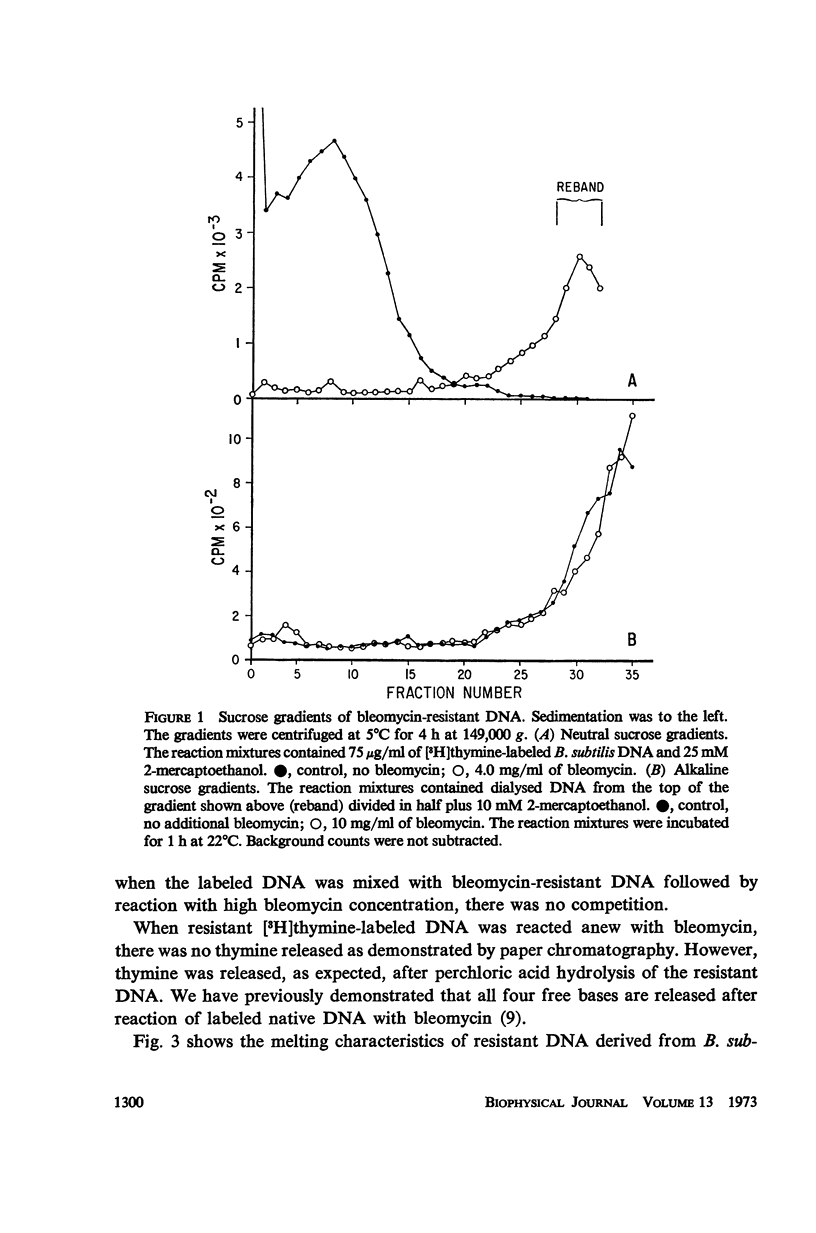
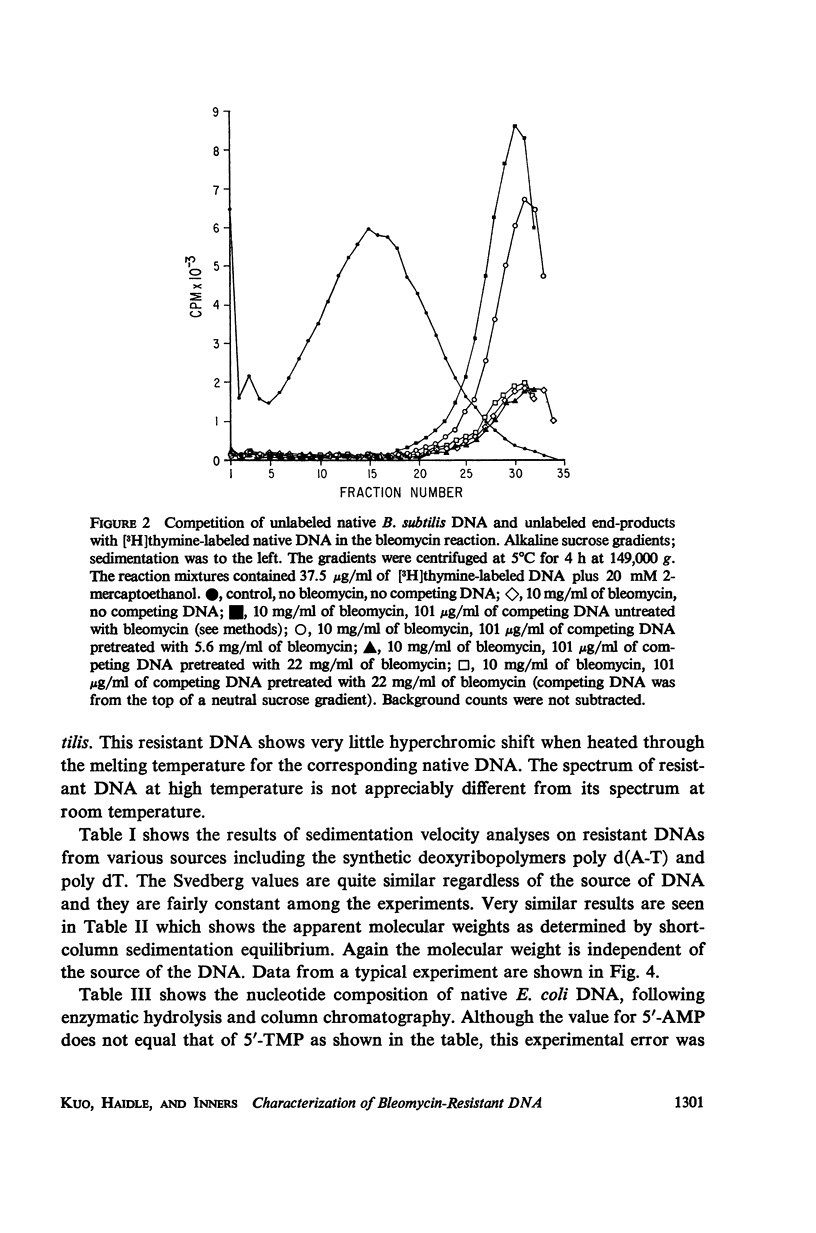
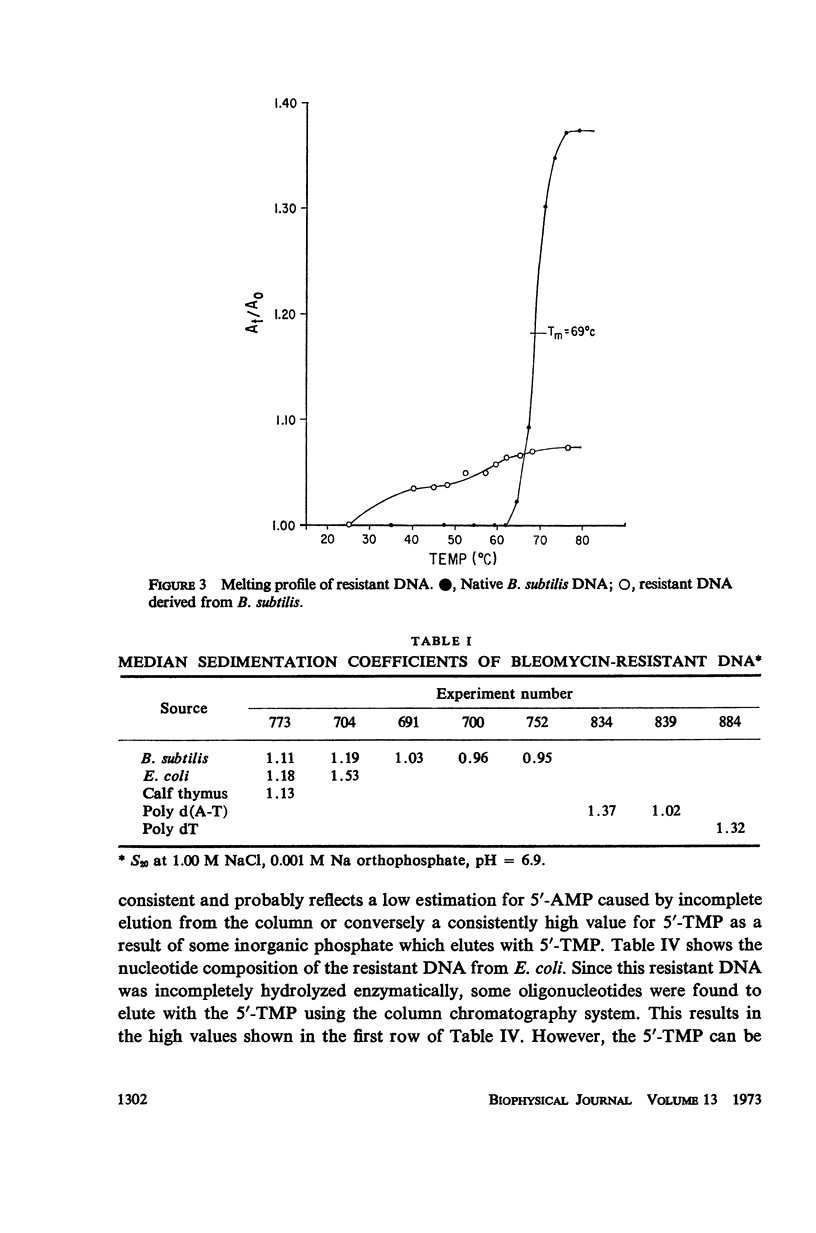
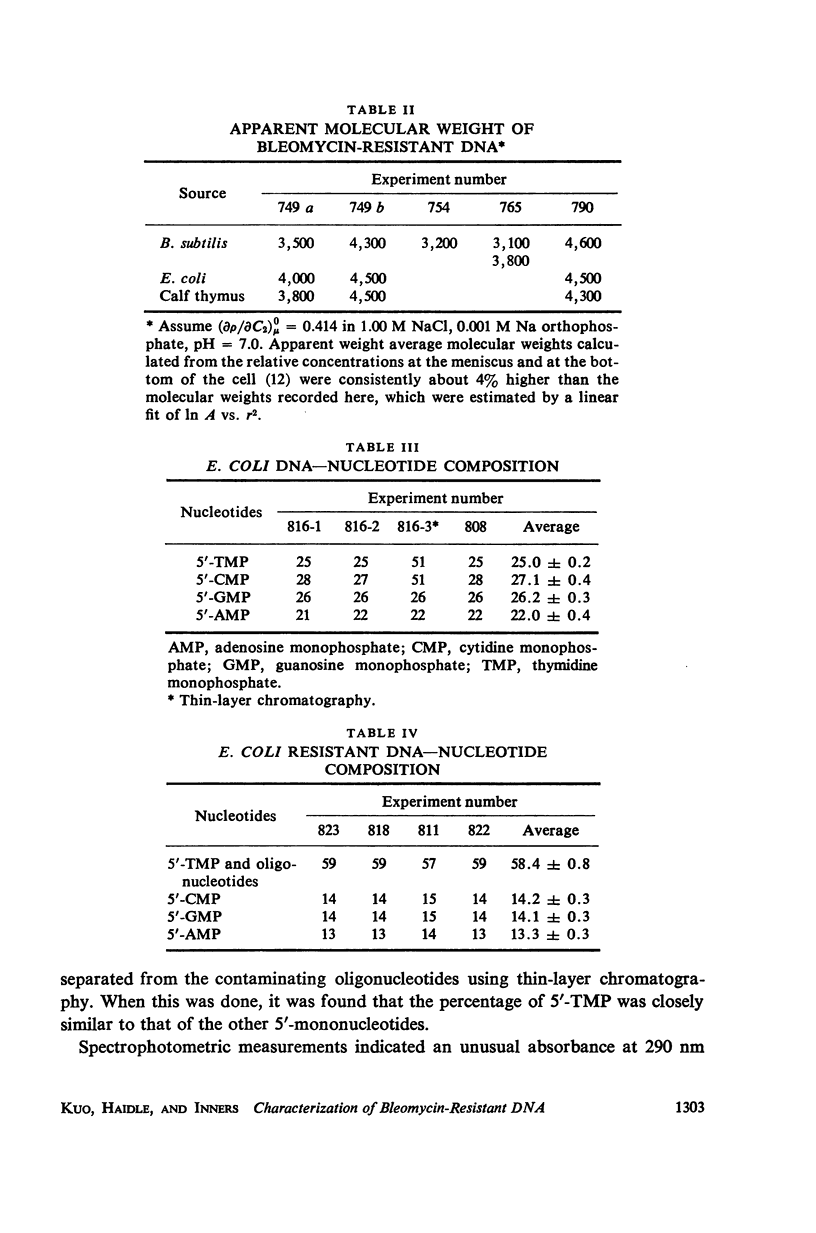
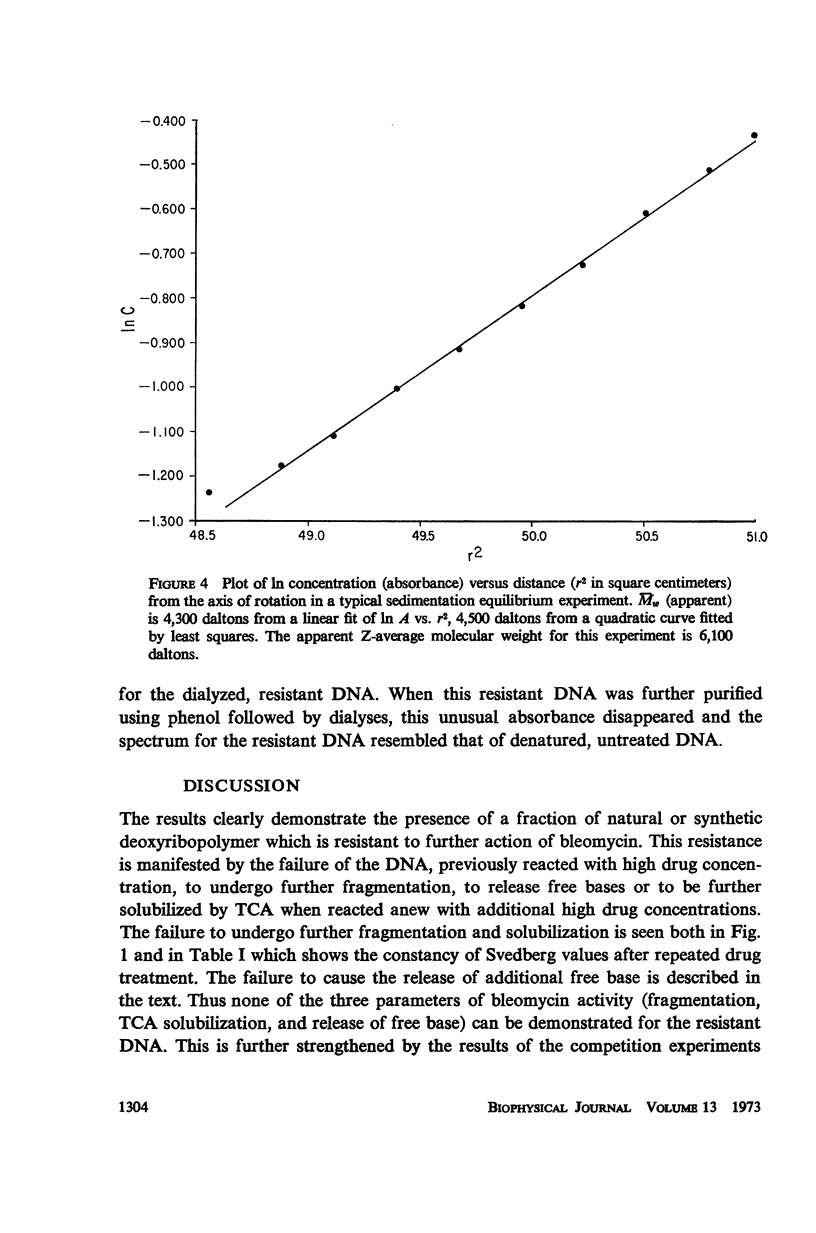
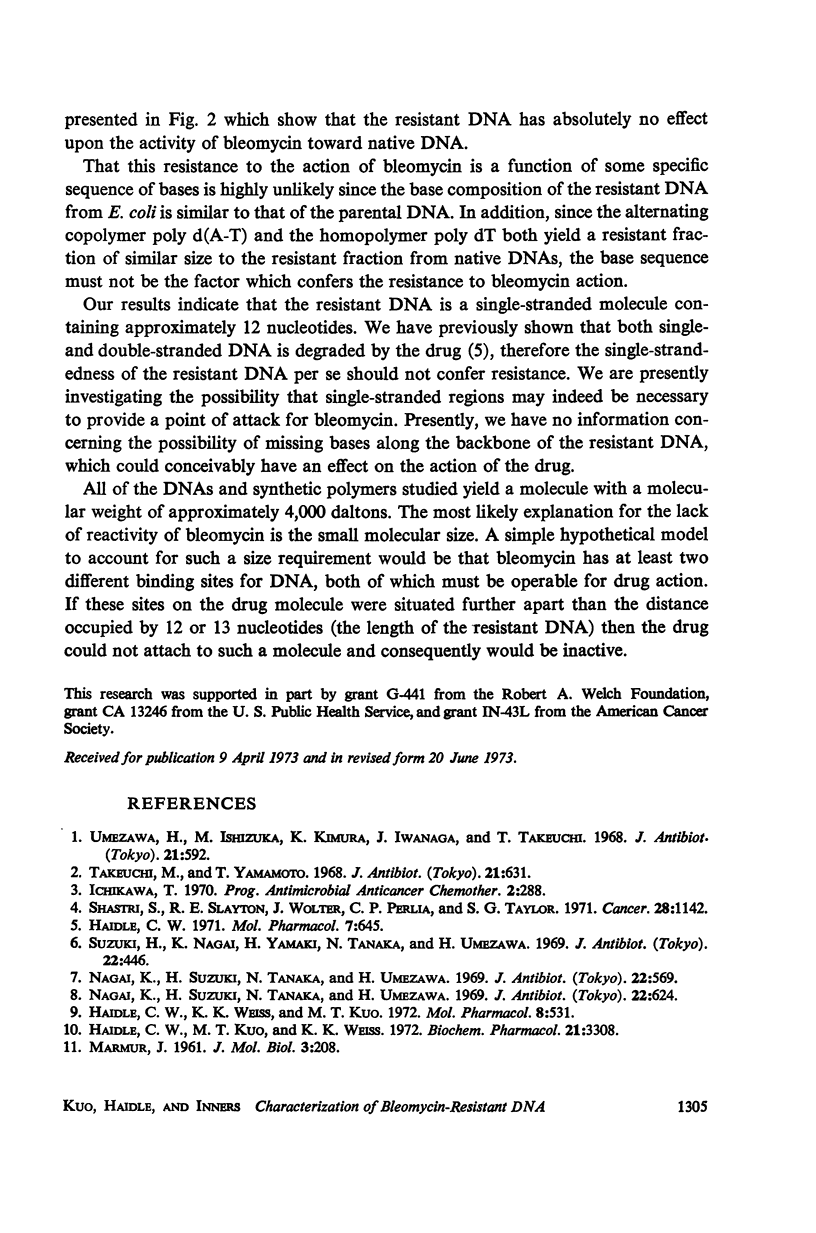
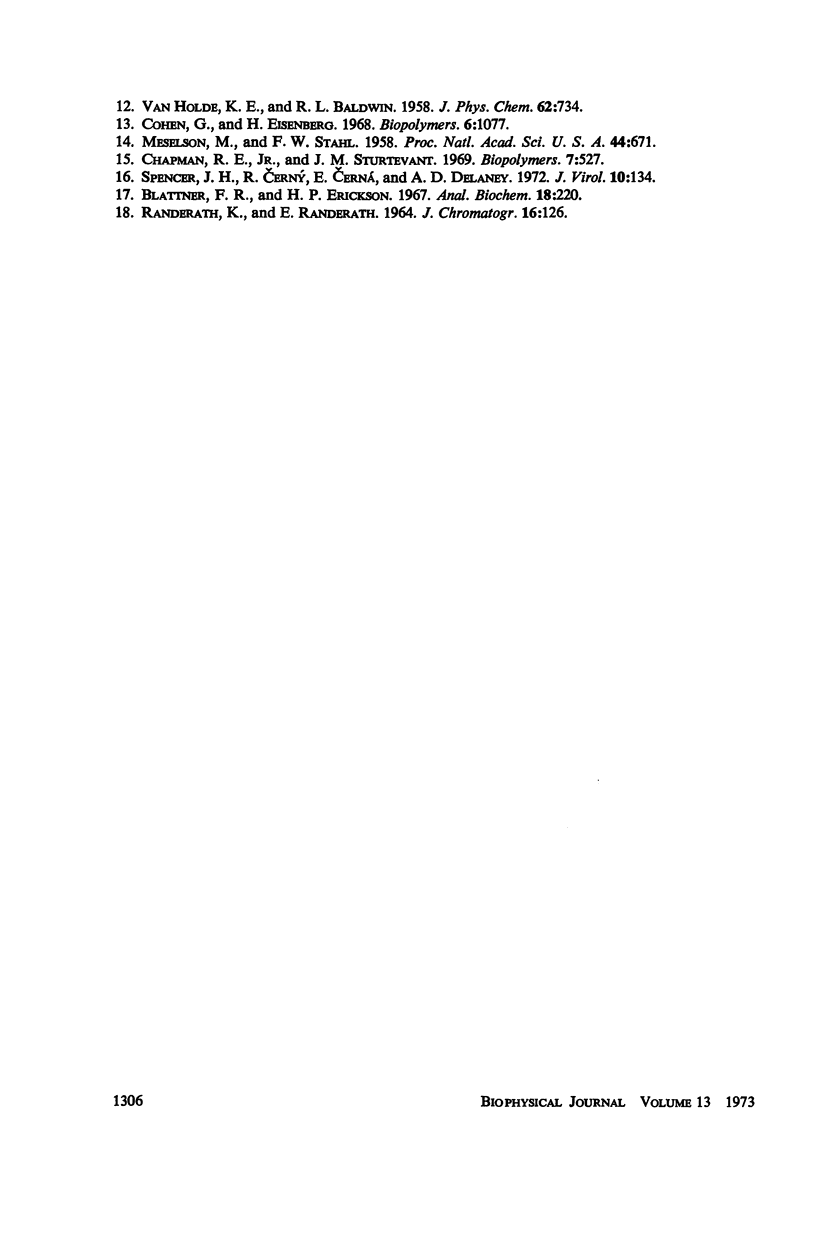
Selected References
These references are in PubMed. This may not be the complete list of references from this article.
- Cohen G., Eisenberg H. Deoxyribonucleate solutions: sedimentation in a density gradient, partial specific volumes, density and refractive index increments, and preferential interactions. Biopolymers. 1968;6(8):1077–1100. doi: 10.1002/bip.1968.360060805. [DOI] [PubMed] [Google Scholar]
- Haidle C. W. Fragmentation of deoxyribonucleic acid by bleomycin. Mol Pharmacol. 1971 Nov;7(6):645–652. [PubMed] [Google Scholar]
- Haidle C. W., Kuo M. T., Weiss K. K. Nucleic acid--specificity of bleomycin. Biochem Pharmacol. 1972 Dec 15;21(24):3308–3312. doi: 10.1016/0006-2952(72)90096-2. [DOI] [PubMed] [Google Scholar]
- Haidle C. W., Weiss K. K., Kuo M. T. Release of free bases from deoxyribonucleic acid after reaction with bleomycin. Mol Pharmacol. 1972 Sep;8(5):531–537. [PubMed] [Google Scholar]
- Meselson M., Stahl F. W. THE REPLICATION OF DNA IN ESCHERICHIA COLI. Proc Natl Acad Sci U S A. 1958 Jul 15;44(7):671–682. doi: 10.1073/pnas.44.7.671. [DOI] [PMC free article] [PubMed] [Google Scholar]
- Nagai K., Suzuki H., Tanaka N., Umezawa H. Decrease of melting temperature and single strand scission of DNA by bleomycin in the presence of hydrogen peroxide. J Antibiot (Tokyo) 1969 Dec;22(12):624–628. doi: 10.7164/antibiotics.22.624. [DOI] [PubMed] [Google Scholar]
- RANDERATH E., RANDERATH K. RESOLUTION OF COMPLEX NUCLEOTIDE MIXTURES BY TWO-DIMENSIONAL ANION-EXCHANGE THIN-LAYER CHROMATOGRAPHY. J Chromatogr. 1964 Oct;16:126–129. doi: 10.1016/s0021-9673(01)82446-8. [DOI] [PubMed] [Google Scholar]
- Shastri S., Slayton R. E., Wolter J., Perlia C. P., Taylor S. G., 3rd Clinical study with bleomycin. Cancer. 1971 Nov;28(5):1142–1146. doi: 10.1002/1097-0142(1971)28:5<1142::aid-cncr2820280509>3.0.co;2-a. [DOI] [PubMed] [Google Scholar]
- Suzuki H., Nagai K., Yamaki H., Tanaka N., Umezawa H. On the mechanism of action of bleomycin: scission of DNA strands in vitro and in vivo. J Antibiot (Tokyo) 1969 Sep;22(9):446–448. doi: 10.7164/antibiotics.22.446. [DOI] [PubMed] [Google Scholar]
- Takeuchi M., Yamamoto T. Effects of bleomycin on transplantable mouse tumors. J Antibiot (Tokyo) 1968 Nov;21(11):631–637. doi: 10.7164/antibiotics.21.631. [DOI] [PubMed] [Google Scholar]
- Umezawa H., Ishizaka M., Kimura K., Iwanaga J., Takeuchi T. Biological studies on individual bleomycins. J Antibiot (Tokyo) 1968 Oct;21(10):592–602. doi: 10.7164/antibiotics.21.592. [DOI] [PubMed] [Google Scholar]


